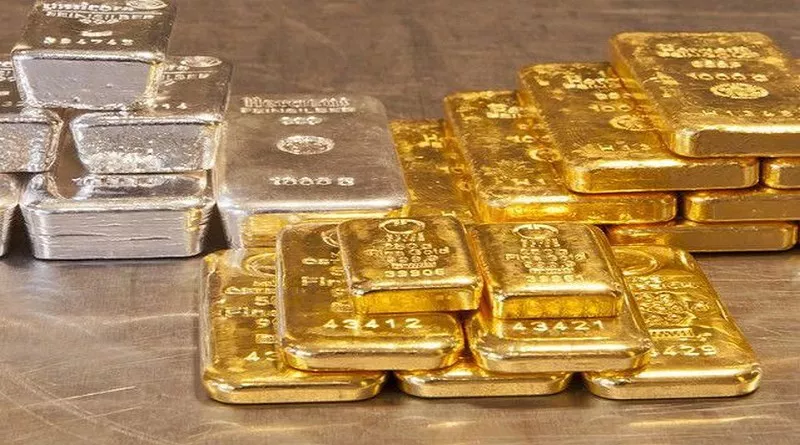Gold, a timeless symbol of wealth and prosperity, often presents an intriguing puzzle for investors and enthusiasts. One perplexing phenomenon is the noticeable price difference between Dubai and India, two regions with significant cultural and economic ties. In this comprehensive exploration, we aim to shed light on the factors contributing to why gold is cheaper in Dubai than in India.
Understanding the Gold Market Dynamics: A Global Perspective
Before delving into the specific reasons behind the price difference, it’s crucial to grasp the broader dynamics that influence the global gold market.
1. Global Gold Prices: The Foundation of Regional Variations
Spot Price Determinants:
The global gold market operates on a spot price system, which reflects the current market value of gold per troy ounce. This spot price is influenced by various factors, including supply and demand, economic conditions, geopolitical events, and investor sentiment.
Universal Benchmark:
The spot price serves as a benchmark for gold prices worldwide, forming the basis for regional variations observed in different countries, including Dubai and India.
2. Currency Exchange Rates: The Rupee-Dollar Dilemma
Indian Rupee vs. US Dollar:
The currency exchange rate is a pivotal factor contributing to variations in gold prices between Dubai and India. The Indian rupee’s exchange rate against the US dollar plays a significant role, as gold is globally priced in dollars.
Impact on Import Costs:
A weaker rupee against the dollar increases the cost of importing gold to India, potentially leading to higher retail prices for consumers. In contrast, Dubai’s favorable exchange rates contribute to lower import costs.
3. Import Duties and Taxes: The Indian Gold Burden
Indian Import Duties:
India imposes import duties on gold to regulate the inflow of the precious metal and manage its impact on the country’s trade balance. These duties add an extra layer of cost to gold imported into India, contributing to higher retail prices.
Dubai’s Duty-Free Advantage:
Dubai, in contrast, benefits from its duty-free status for gold imports. The absence of import duties makes gold more affordable for consumers, fostering a competitive market with lower retail prices.
4. Transportation and Logistics: Bridging the Distance Gap
Shipping and Handling Costs:
The geographical distance between Dubai and India introduces additional costs related to shipping and handling. While transportation costs are a factor, they are not the primary driver of the price disparity.
Efficiency in Dubai’s Supply Chain:
Dubai’s strategic location as a global trading hub allows for more efficient supply chains, reducing overall logistical costs. This efficiency contributes to the competitive pricing of gold in the Dubai market.
5. Gold Demand Patterns: Cultural Influences on Consumption
Cultural Significance in India:
Gold holds immense cultural and religious significance in India. Traditionally, gold has been a symbol of wealth, auspicious occasions, and a popular investment. High demand, especially during festivals and weddings, can contribute to upward price pressure.
Diverse Demand in Dubai:
While Dubai also boasts a rich cultural affinity for gold, the demand is diverse, encompassing both local and international buyers. This diverse demand landscape may contribute to a more stable and competitive pricing environment.
6. Regulatory Policies: Navigating Legal Frameworks
Government Regulations in India:
India’s regulatory environment, including import duties and taxes, aims to manage the impact of gold on the economy. While these policies are crucial for economic stability, they also contribute to the comparatively higher gold prices in India.
Dubai’s Business-Friendly Policies:
Dubai’s business-friendly policies, including its duty-free status, create an environment conducive to competitive pricing. The absence of stringent regulations on gold imports fosters a more accessible market for consumers.
7. Market Competition: Supply and Demand Dynamics
Dubai’s Competitive Market:
The gold market in Dubai is characterized by intense competition among numerous dealers and traders. This competitive landscape exerts downward pressure on prices, benefitting consumers with more favorable rates.
Indian Market Dynamics:
India’s gold market, while vibrant, faces challenges related to import duties, taxes, and regulatory frameworks. These factors, coupled with high demand, contribute to a market where retail prices may be comparatively higher.
Conclusion: The Tapestry of Gold Prices in Dubai and India
In conclusion, the price disparity between gold in Dubai and India is a complex interplay of currency exchange rates, import duties, transportation costs, cultural demand patterns, and regulatory frameworks. While Dubai enjoys the benefits of a strategic location, a duty-free status, and a competitive market, India grapples with regulatory measures aimed at balancing gold consumptionand economic stability.
As investors and enthusiasts navigate the gold markets in these two regions, understanding the multifaceted nature of these influences is crucial. The allure of gold remains undiminished, but its pricing intricacies reflect the broader economic and cultural landscapes in which it is traded. Whether purchased for investment, adornment, or cultural traditions, gold continues to be a captivating and valuable asset, despite the variations in its price across different corners of the globe.

